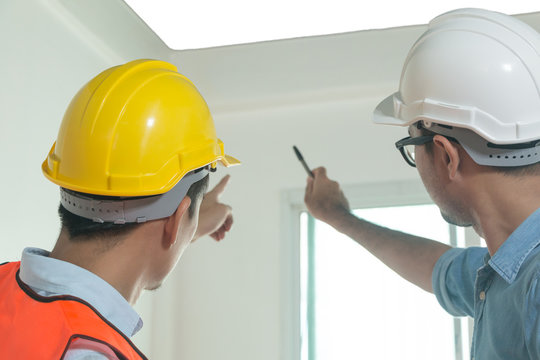11 Red Flags AHERA Inspectors Spot In Older Buildings
Discover 11 key red flags trusted AHERA inspectors near Snohomish County WA identify in older buildings to protect your health and ensure asbestos safety.

Older buildings have history, charm, and sometimes hidden dangers. For buildings built before 1980, asbestos may be lurking in unexpected places. That is where trusted AHERA inspectors near Snohomish County WA come in. They are very important in identifying asbestos-containing materials (ACMs) and ensuring buildings are safe for occupants. Knowing what inspectors look for can help you better understand your building's risks. Here are eleven red flags AHERA inspectors often spot in older buildings.
Trusted AHERA Inspectors Near Snohomish County WA Find Damaged Insulation
Older buildings often have asbestos applied to pipe insulation. Over time, insulation can loosen and flake, creating a serious health danger. Fractured, crumbly, or missing insulation releases strands of asbestos into the air and poses a significant risk, as it typically resides in the basement level, boiler room, or hard-to-maintain areas. Therefore, inspectors caution one to seal these materials, where possible, or seek professional assistance with removal.
Cracked Floor Tiles
Many older buildings contain vinyl or linoleum floor tiles that contain asbestos. Inspectors are trained to look for cracked, chipped, or broken tiles that could release dangerous fibers if disturbed. Nine-inch by nine-inch tiles are particularly suspect because they were popular before the 1980s. The adhesive used to fix the tiles in place can also contain asbestos. Flooring damage should be promptly addressed to avoid further contamination.
Deteriorating Ceiling Materials
Textured ceilings, also known as popcorn ceilings, were popular in the mid-20th century. Unfortunately, many of them contain asbestos. Inspectors look for ceilings with peeling, flaking, or crumbling materials since these conditions release dangerous fibers. They also examine ceilings in rooms with high moisture levels, such as bathrooms, where deterioration happens faster. Deteriorating ceilings are a red flag, especially for older schools and commercial buildings.
Aging Roofing Materials
Shingles felt, and adhesives are the most common roofing materials where asbestos hides. Inspectors look for signs of wear, such as cracks, brittleness, or missing sections. Aging roofing materials can be a significant hazard when renovations or storms disturb debris. These materials are particularly worrying because they're exposed to weathering, accelerating their degradation. Trusted AHERA inspectors near Snohomish County WA are essential to ensure roofs in older buildings remain safe.
Fragile Hvac Duct Wraps
Asbestos is also used to wrap insulation on HVAC ducts. Inspectors look for signs of deterioration, including loose fibers, cracks, or water damage. Wraps become brittle due to aging and are especially vulnerable in poorly ventilated areas. Fragile duct wraps are considered a red flag because, when disturbed, HVAC systems can spread asbestos fibers throughout the building. Keeping HVAC systems asbestos-free is crucial to maintaining indoor air quality.
Old Fireproofing Materials
Fireproofing materials used in older buildings contain asbestos, which is very resistant to heat. Inspectors look at areas such as steel beams, columns, and walls for damaged or deteriorating fireproofing. This is especially prevalent in high-rise buildings or industrial facilities. Any loose or flaking fireproofing material is a major red flag because it can easily release fibers when disturbed. Proper removal or encapsulation is necessary to reduce risks.
Disintegrating Window Caulking And Glazing
Most window caulking and glazing materials used over the past decades contained asbestos to make these materials long-lasting. The inspectors are also keen on missing or deteriorating caulking, especially in schools and older public buildings. This is because most decaying windows lead to the crumbling of caulking during repairs or window replacements into asbestos dust in the air. Maintenance prevents these materials from becoming dangerous.
Latent Asbestos In Unusual Locations
AHERA inspectors often find asbestos in the most unlikely places: old electrical wiring, cement pipes, or chalkboards. These hidden sources of asbestos can be dangerous because they tend to go unnoticed when renovations occur. Trusted AHERA inspectors near Snohomish County WA carefully examine older buildings to reveal these hidden threats. A hidden asbestos source is a sign of concern because exposure often happens too late after it has been discovered. All-round inspections are the best way to handle these threats.
Water-Damaged Building Materials
Water damage accelerates the deterioration of asbestos-containing materials. Inspectors find stains, warping, or visible water damage in walls, ceilings, and flooring. Water damage is a major red flag because it weakens ACMs, allowing fibers to become airborne easily. Typical trouble areas include leaks, plumbing problems, and increased humidity.
Improper Previous Removal
In some instances, asbestos-containing older structures have been improperly removed. The presence of residue, incomplete abatement work, or unsafe disposal methods is an indicator. Improper removal is a red flag since it leaves the fibers behind and poses long-term health risks. Certified professionals must always handle asbestos removal to ensure it is safely and completely removed.
Unlabeled Asbestos-Containing Materials
Asbestos is not indicated within the ACM-containing older buildings; thus, it is a flag for inspection officers. This poses an immense risk of asbestos exposure during maintenance or renovation since no proper marking exists for individuals handling it.
Even minor repairs can disturb these materials without clear identification, releasing dangerous fibers into the air. AHERA guidelines emphasize accurate labeling to reduce risks and maintain compliance. Identifying and labeling ACMs is important in keeping buildings safe for everyone.
Conclusion
Awareness of these red flags helps building owners and occupants be proactive regarding the risk of asbestos. Regular inspection by trusted AHERA inspectors near Snohomish County WA is vital in identifying hazards and taking measures accordingly. Early intervention prevents exposure to dangerous asbestos fibers from damaged insulation, cracked tiles, and hidden materials. Protect your health and safety through awareness and vigilance regarding the materials in your building. Safe spaces begin with awareness and proper care.
What's Your Reaction?






















